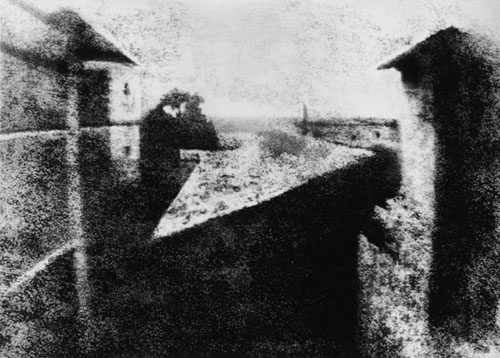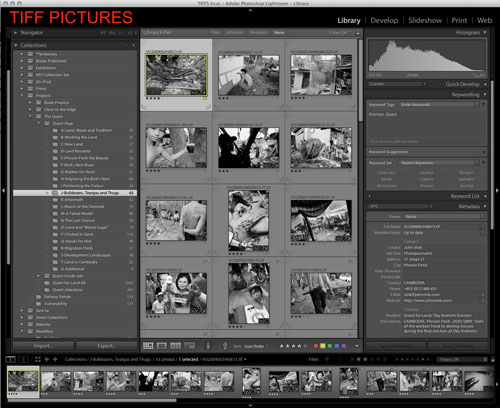‘The Quest’ for iPad: about editing
See also: ‘The Quest’ for iPad: why?, ‘The Quest’ for iPad: the team, ‘The Quest’ for iPad: organising content
Editing, selecting the photographs: we do it all the time. It’s the trick of our trade. It starts before we even take a picture, out in the field, choosing what to photograph, deciding what we will not show. We filter what we see, we isolate an event from its context in the viewfinder and later, at home, in front of the contact sheet or the screen, relying on the memory of what we saw, on what we think we know, on what we learned, we rebuild the ‘truth’ with the pieces of the puzzle we collected.
Photography was invented to show the ‘truth’ or reality, but spirited away from that reality. It was not so much designed to be more accurate than the paintbrush as to be able to easily carry locations back home. In fact Mr Niepce invented an illusion (illusion |iˈlo͞oZHən| noun. a thing that is or is likely to be wrongly perceived or interpreted by the senses). He gave us a chimera machine.
What is believed to be the very first picture? It is an illusion: grainy black & white forms vaguely representing two towers and a patch of sun engraved on a silent, two dimensional metallic object make us believe we are looking through a window in Saint-Loup-de-Varennes in 1826. We believe it because we were told that’s what it is, because we trust the person who told us, because we don’t have the possibility to go to Saint-Loup-de-Varennes in 1826 to check it out, and because Photoshop didn’t exist back then.
So, please people, trust me when you will see the pictures from ‘The Quest’. I do my best to keep the cheating in my photographs to a minimum. I only use the legitimate cheats (you know: framing, selecting, omitting)… I rely on the fact that you, reader, have integrated the basic codes, that you accept the fact that you are looking at a chimera, that you already know HOW to read a photograph. I rely on the fact that you are literate in photography and that you trust me…
And that is why the home editing process is crucial… I want to give as little space for interpretation for as long as I can to the reader. At one point of course, the picture will escape me, belong to the beholder. I can live with that. It is part of the deal between you and me.
Going through all the photographs which were taken for a story is the time you restore everything you saw, learned, heard, felt, smelled, submit it to other eyes than yours and hope these eyes will trust you. But in silence, with B&W and in 2D.
It is a battle between form and content. Sometimes the form is good but the content just isn’t there. Sometimes the content is perfect but the form is lousy and the eye is taken to the wrong place in the picture. I compromise… but I don’t betray.
Anyhow, I have little imagination. I just can’t make up things. So I might as well stick to the facts then. I am more a content guy than a form guy. Mind you, I’m not dismissing the importance of form, composition, light balance, contrast, density, framing. Without it you can’t read the content. Form is there to serve the content. Not the other way round. I tend to privilege content.
Technically the editing for ‘The Quest’ was entirely done on a screen. Not one work print was made… The days of going through hundreds of contact sheets are bygone. You might want to check out the ‘Magnum Contact Sheets’ book (I still haven’t seen my copy though) and get a hint of how it was done in them not so distant old days…
For ‘The Quest’ everything went through Lightroom. It offers so many ways to put together and show sets of pictures, to store temporary selects, make slideshows, to search for particular pictures through keywords, location, date, to rate pictures. It is the perfect tool. Tailor made. Even better than iView Media Pro which I have used for editing for years, and which I now use only to generate XML files which allow to couple the text data with the pictures once they are in the file you will download on your iPad.
Still, the 3,500 + pictures taken during evictions or land issues situations in Cambodia were trimmed down to some 600. About 150 pictures were added to put those 600 into their context. Painful decisions were made, but one goal stayed on my mind throughout: the mechanisms of an injustice hitting thousands of people in Cambodia had to be told. That’s what it is about.
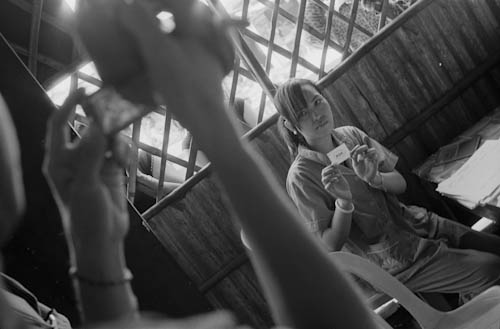
SELECTED: CAMBODIA. Phnom Penh. 25/03/2006: Phnom Penh. 25/03/2006: An inhabitant of Sambok Chap registers for a plot of land 5x12m in Dangkor district, 27km from the city centre, in compensation for her house which will shortly be demolished.

REJECTED: CAMBODIA. Phnom Penh. 25/03/2006: Inhabitants of the Bassac slum registering for the attribution of a landplot of 5 x 12m in Dangkor district, 27 km from their actual location, in compensation for their house which will be destroyed soon. The land on which the slum was built was sold by the municipality to Sou Srun company.
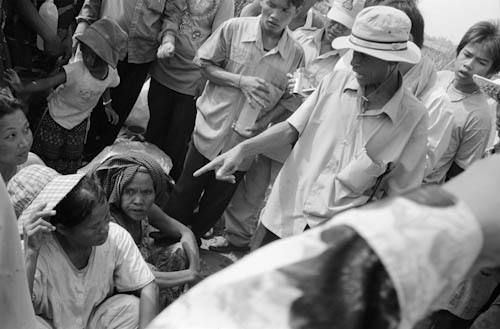
SELECTED: CAMBODIA. Phnom Penh. 13/05/2006: Authorities expelling outsiders hoping to get land on the new site by mixing with the renters. during eviction of the Sambok Chap settlement. 1600 families are being displaced to a plot of land 27Km from the center of town. The 1200 families who were owners of their shack in the community receive a plot of land 5m x 12m. The 400 remaining families who were renting were not included in the plan.
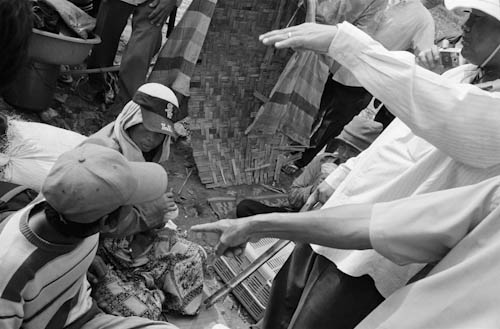
REJECTED: CAMBODIA. Phnom Penh. 13/05/2006: Eviction of the Bassac slum. 1600 families are being displaced to a plot of land 27Km from the center of town. The 1200 families who were owners of their shack in the slum receive a plot of land 5m x 12m. The 400 remaining families who were renting were not included in the plan. Authorities expelling outsiders mixing with the renters hoping to get land on the new site.
Next post on ‘The Quest’ for iPad: organising the edit
